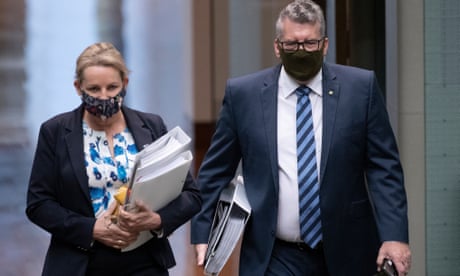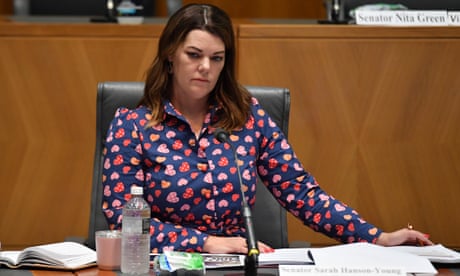Extract from The Guardian
Conservation groups say ‘incredibly concerning’ report shows Coalition is failing to protect endangered wildlife.

In a report on the management of threatened species, tabled on Thursday, the Australian National Audit Office found the federal environment department had been partly effective in its administration of national environmental laws but not efficient.
The audit found just 2% of recovery plans since 2013 had been drafted and finalised within the timeframes required under law, with the average time taken being 2,355 days (6.4 years).

Where reviews of plans were available, they typically indicated the objectives had not been fully met.
In findings that conservation groups described as “incredibly concerning” the ANAO wrote the conservation status of most Australian species, once listed as threatened, was not monitored.
The status of listed ecological communities and threats was not monitored at all.
The report’s release comes days after the Morrison government announced there would be new measures in the budget to further streamline the process developments have to go through to receive their environmental approval.
Environment groups have called the announcement a step towards an “industry free-for-all”, comments which the environment minister, Sussan Ley, has rejected.
Overall, the auditor wrote there was limited evidence that the desired outcomes of Australia’s environmental laws for threatened species were being achieved “due to the department’s lack of monitoring, reporting and support for the implementation of conservation advice, recovery plans and threat abatement plans”.
“There is no measurement, monitoring or reporting on progress, or on the contribution of listing assessments, conservation advice, recovery plans and threat abatement plans to their desired outcomes,” the report states.
Sophie Power, the national biodiversity policy adviser at the Australian Conservation Foundation, said the audit “starkly reveals how Australia’s key piece of environmental legislation is failing our unique threatened species”.
Alexia Wellbelove, of the Humane Society International, said the report was more evidence of the need for stronger environmental protections, as recommended by the former competition watchdog head Graeme Samuel in his review of national environmental laws.
“The failure to monitor the status of most species is incredibly concerning, made even more so by the total failure to monitor the status of ecological communities and key threatening processes,” she said.
The report found that the threatened species scientific committee, which advises the government on listings of endangered species, was largely completing its assessments in the timeframes required under law.
The average time take for an assessment in 2020-21 was 940 days.
Recovery plans, recovery plan reviews, threat abatement plan reviews and changes to the list were not completed by the government within statutory timeframes and the department was unable to demonstrate any improvement over time.
Only one of the 55 listed species and habitats with recovery plans due since 1 July 2013 met its statutory due date.
Recovery plans must be reviewed within five years but this had not occurred for any of the 77 plans requiring review between July 2016 and June 2021.
The auditor wrote that budget cuts in 2018 had resulted in the department’s executive board agreeing to a strategy to develop recovery plans for “the highest priority threatened species only to facilitate a reduction in staffing levels”.
A plan announced last year to reduce the number of species and habitats requiring recovery plans had been developed in order to bring the government back into compliance with legal timeframes, the report states.
In September, the department published for public consultation a list of the first 185 species and habitats the government proposed would no longer have a recovery plan.
The audit found that of 6,701 submissions the department received (6,505 of which were part of environmental campaigns) all disagreed with the proposal to scrap the recovery plans.
Suzanne Milthorpe, of the Wilderness Society, said the report showed that “the wildlife that is core to Australia’s identity is being put at severe risk by the government’s unwillingness to fix problems they’ve been warned about for decades”.

The report also found the government was not effective in identifying threats that should be assessed by the scientific committee for official listing as a key threatening process.
No threats had been nominated for listing since 2011 despite the committee having stated there were several causes of environmental decline that were not currently listed as threats.
Similar to recovery plans, the audit found most threat abatement plans were not routinely tracked and where a review was available it indicated the goals of the plan had not been fully achieved.
Carol Booth, the principal policy analyst at the Invasive Species Council, said the audit showed the government was failing to apply basic processes to tackle threats to nature.
She said it was “damning” the audit found there were no processes for determining whether Australia’s threat abatement and recovery efforts were effective.
“One major failing identified by the audit … is that the major threats have not even been comprehensively listed under the EPBC Act – including adverse fire regimes, which has been under assessment for almost 14 years,” she said.
The report makes six recommendations, including that the department establish an assurance process to monitor the implementation of conservation plans and a framework for the monitoring and reporting of listed species.
The department has accepted all of the recommendations and said it “will commence working on their implementation”.
“The report will be used to inform continued efforts to improve the efficiency and effectiveness of management of threatened species and ecological communities,” a spokesperson said.
Comment was sought from Ley.
No comments:
Post a Comment